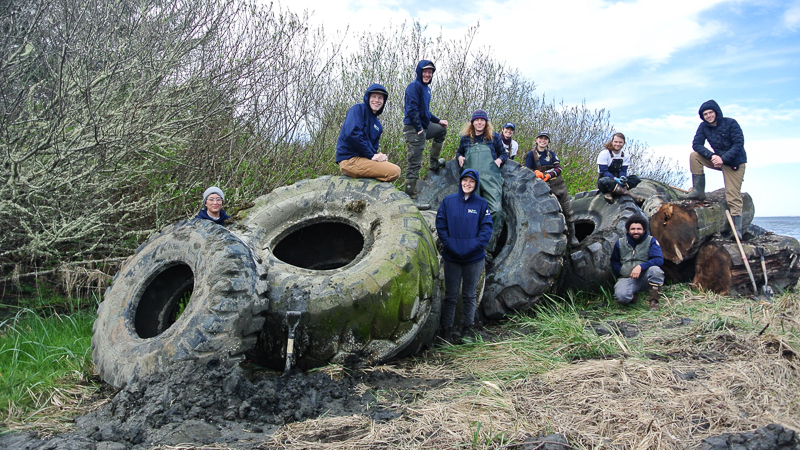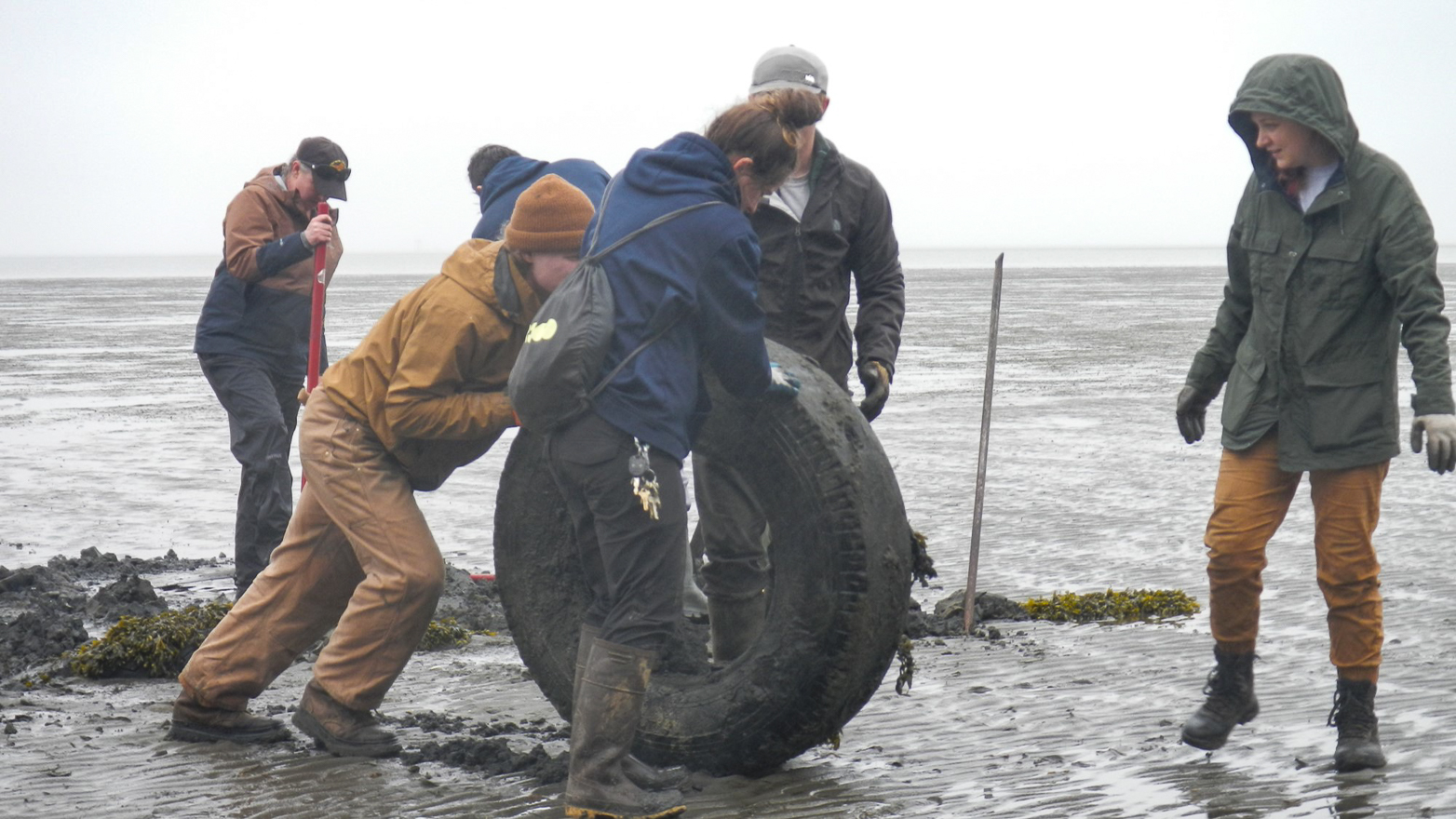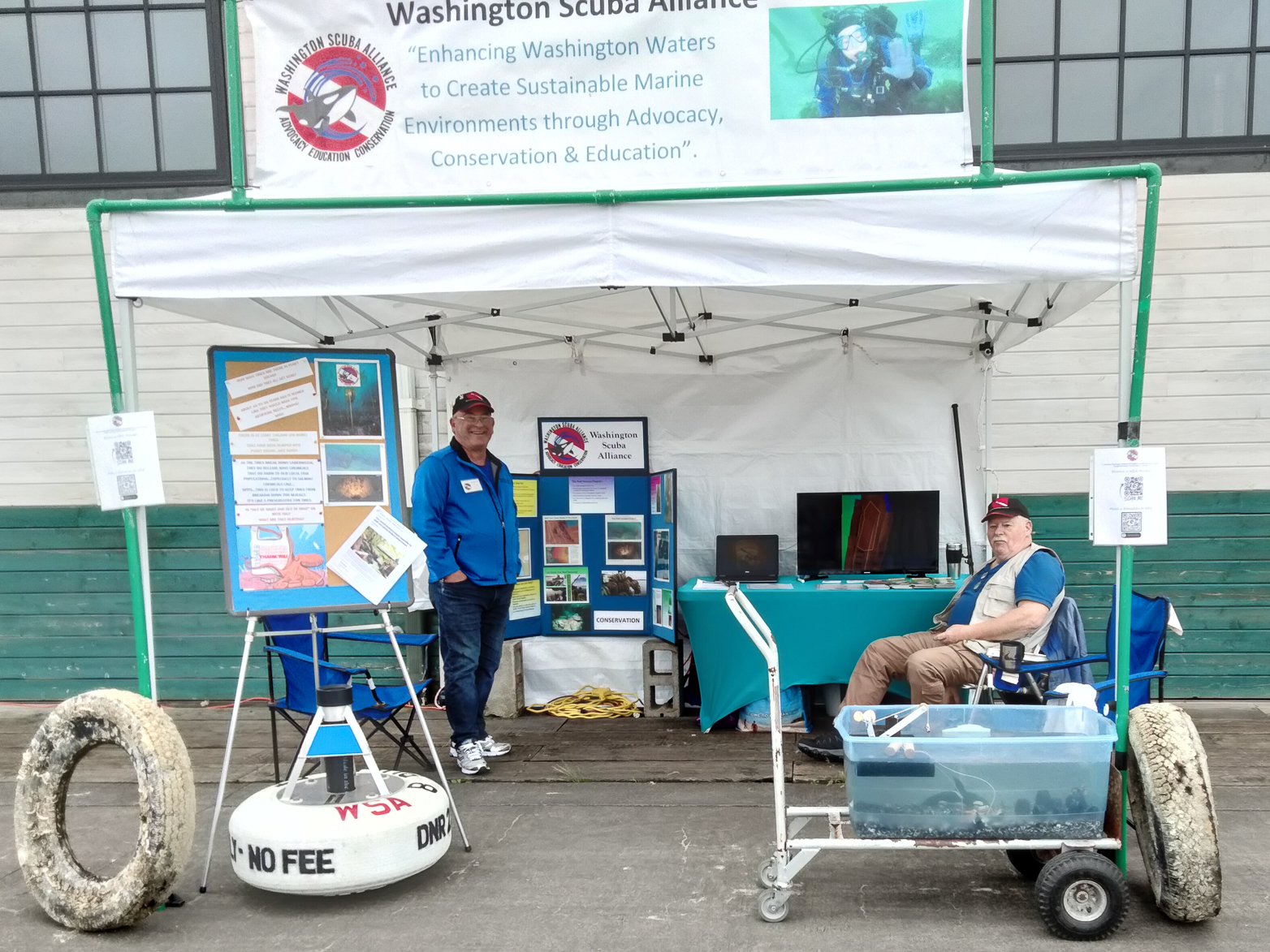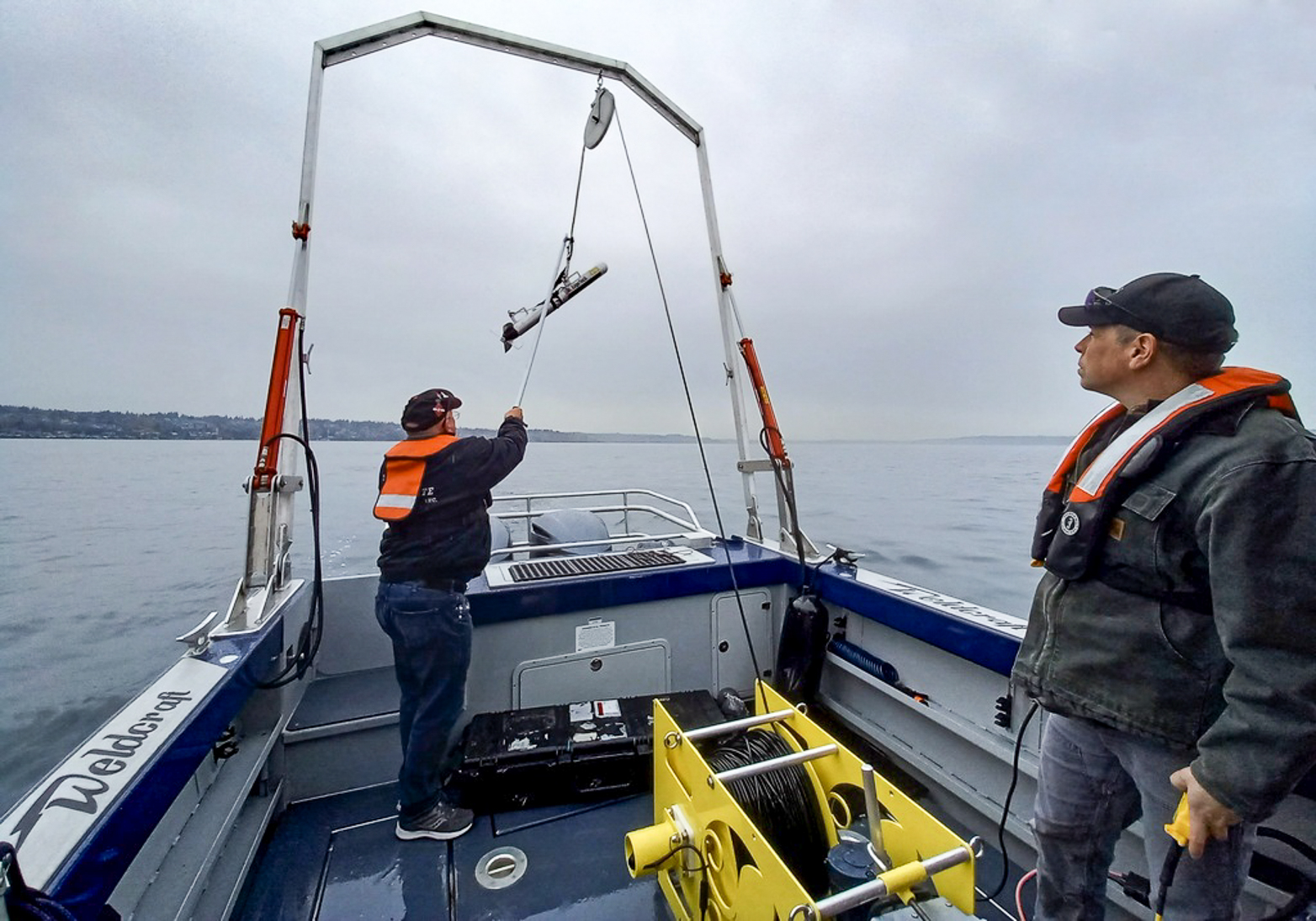
This spring, Washington Conservation Corps crew members removed 200,000 pounds of tires from the tideflats of Bottle Beach State Park in Grays Harbor County.
Dropping old tires in marine waters to create habitat was a popular idea before the 1980s. Like other coastal areas around the country, Washington’s waters got their share of these tire bundles.
The well-meaning placement of tire debris turned out to have unexpected consequences. The bundles of tires broke down under water and scattered across the sea floor, leaching pollutants that we now know are harmful to fish and other aquatic life.
Tire debris gained a new level of attention in a recent study by the University of Washington Tacoma, the University of Washington (Seattle), and Washington State University Puyallup. Scientists discovered that a substance called 6PPD-quinone, which is derived from a preservative used to protect tires from breaking down too quickly, is highly toxic to endangered coho salmon and several other fish species.
There are about 30 known locations where tires have been deposited in Puget Sound. While a report summarizing tire pile surveys is still in progress, early estimates suggest that there are hundreds of thousands of tires in the Sound — a number that could go up as we and our partners inventory all the sites.
Removing tires will take years
Removing submerged tires is a complex, long-term issue. They must first be located so we can determine the extent of the problem at each site. It will take several years to complete the tire removal work, which includes securing funds for the project, identifying their locations, arranging site access, coordinating personnel and equipment, and transporting the tires to a disposal facility. Ecology is partnering with the departments of Natural Resources (DNR) and Fish and Wildlife on this long-term tire removal project.
But there’s no need to wait until the plan is ready before tackling parts of the problem. We awarded Public Participation Grants to two nonprofits who are working on tire removal efforts, Twin Harbors Waterkeeper and Washington Scuba Alliance.
Twin Harbors Waterkeeper
Twin Harbors Waterkeeper (THW) received a grant in 2019 to advocate for waste remediation in and around Grays Harbor. THW monitored beaches for waste, which led to the discovery of waste tires on the Bottle Beach State Park tideflats, a critical feeding ground for more than a million migratory birds each spring. Local residents had placed more than 350 large equipment tires to protect the shoreline from erosion, but the tires ended up narrowing the beach, harming the forage fish that birds feed on.
THW reported the tires to DNR through the My Coast tool. In May 2022, DNR contracted with the Washington Conservation Corps (WCC) — an AmeriCorps program run by Ecology that provides hands-on experience, field skills, and training to young adults and military veterans — for the backbreaking work of digging out 200,000 pounds of tires, cleaning off the mud, and hauling them to the highway for transportation to a facility where they will be burned as fuel. Our Waste Tire Removal Account may pay for disposal costs.
Video credit: Washington Department of Natural Resources
This project highlights how a Public Participation Grant can spark connections and partnerships with tremendous environmental benefits.
Washington Scuba Alliance
In 2021, the Washington Scuba Alliance (WSA) received funding to locate and generate an inventory of 20 tire reef sites sitting at the bottom of Puget Sound. The organization’s volunteers are combining their expertise onboard the research vessel R/V Phoenix to locate, scan, and quantify almost half a million waste tires.
WSA is uniquely positioned to do this work because of its expertise both on and in the water as well as the organization's connections with local divers who are crowdsourcing first-hand accounts of the tires’ underwater locations. By using sonar side-scan survey technology, a remotely operated underwater vehicle, and scuba divers, WSA aims to have a complete interactive map of all 20 sites by June 2023. These data will inform the broader effort underway at DNR to locate and remove every tire in Puget Sound.
WSA volunteers are also raising public awareness of the threats posed by the tires by sharing this project in classrooms, at community fairs, and with the media. Increasing public awareness and understanding of waste problems is a cornerstone of the Public Participation Grant program.
How you can help
Both Twin Harbors Waterkeeper and Washington Scuba Alliance welcome volunteers. You can also help by disposing of old tires properly. Find a tire recycling location near you at Washington Recycles.





